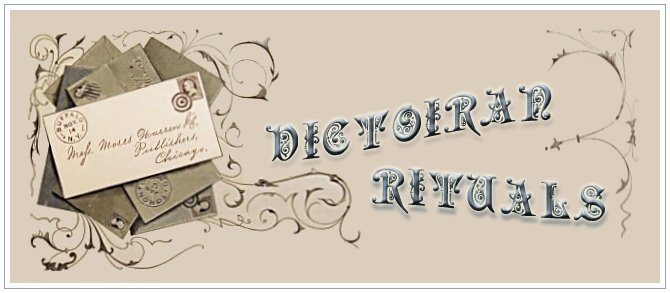 When people died during the reign of Queen
When people died during the reign of Queen There were rules of etiquette written about funerals regarding the planning, flowers, services and mourning of a loved one. Some of these rules were probably less strict in rural areas.
Postmortem photography of the deceased often served as mementos of families who could not afford a painted portrait. Having a photo of the deceased, especially of children, was particularly important when no other photos already existed. The invention of the Carte de Visite, which enabled multiple prints to be made from a single negative, meant that images could be sent to distant relatives, or used on memorial cards announcing the child’s death. The deceased were commonly represented as though they were peacefully sleeping rather than dead, although at other times the body was posed to look alive.

Mourning jewelry such as lockets, brooches and rings, usually containing a lock of hair and/or photograph, functioned as tangible reminders of the deceased. While not exclusively for mourning, hair art was a natural way to remember a deceased loved one.
Godey’s Lady’s Book and Peterson’s Magazine introduced the craft of making mourning jewelry, which soon became a popular pastime. Preparation was important. First the hair was boiled in soda water for 15 minutes. It was then sorted into lengths and divided into strands of 20-30 hairs. Most pieces of jewelry required long hair. For example, a full size bracelet called for hair 20 to 24" long. Sometimes horse hair was used because it was coarser than human hair, and thus easier for a beginner.
Further information can be found on the following websites:
A Lively Look at the History of Death
Victorians Hair Artists Guild
Haunted when it Rains [Post-Mortem Photography - Graphic]
(Jet Mourning Jewelry Photo Source: www.timedancesby.com)

8 comments:
It reminds me an urban history that my grandfather used to tell as about a women that walked at night and she cried everyday because she was lost her son.
Can ayone tell me who the artist is that did the first picture in this post? The mourning woman picture. I really want a poster of this, if such a thing exists.
my partner died,6 months ago and I have been in black ever since amazing how many people these days do not understand
thanks for information this your post it is us full. packers and movers madhapur
very nice description of the Victorian rituals.
Kerala University
I am a huge fan of victoria.It is very interesting to know about her through this blog.Thank you so much for your information.One Telugu Media
Great design ! I liked it very much. keep creating more such designs and arts.Paytm Coupons
WONDERFUL Post.thanks for share..extra wait .. … real money casino
Post a Comment